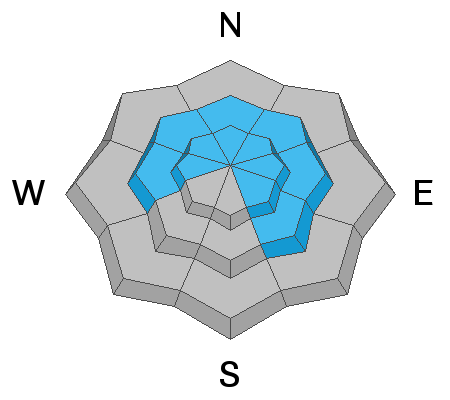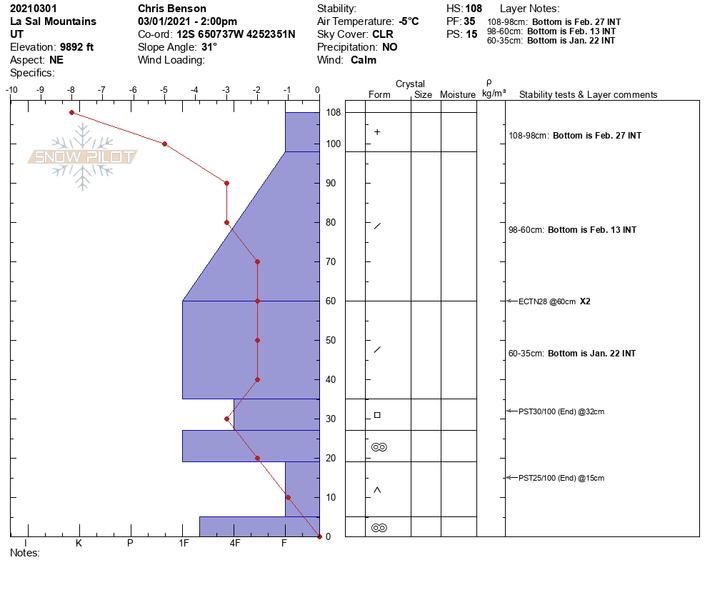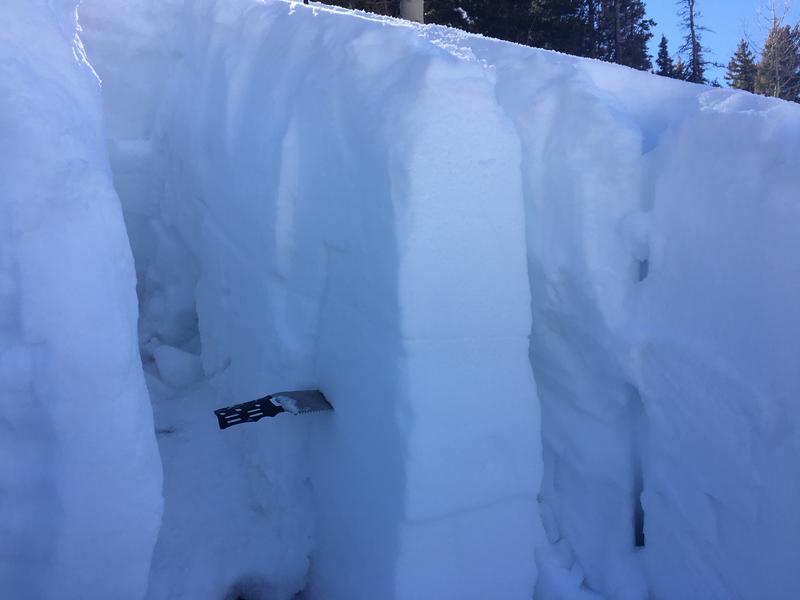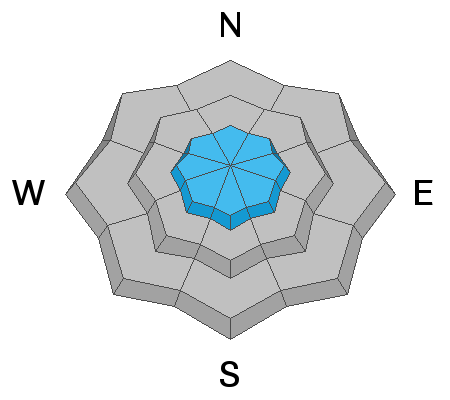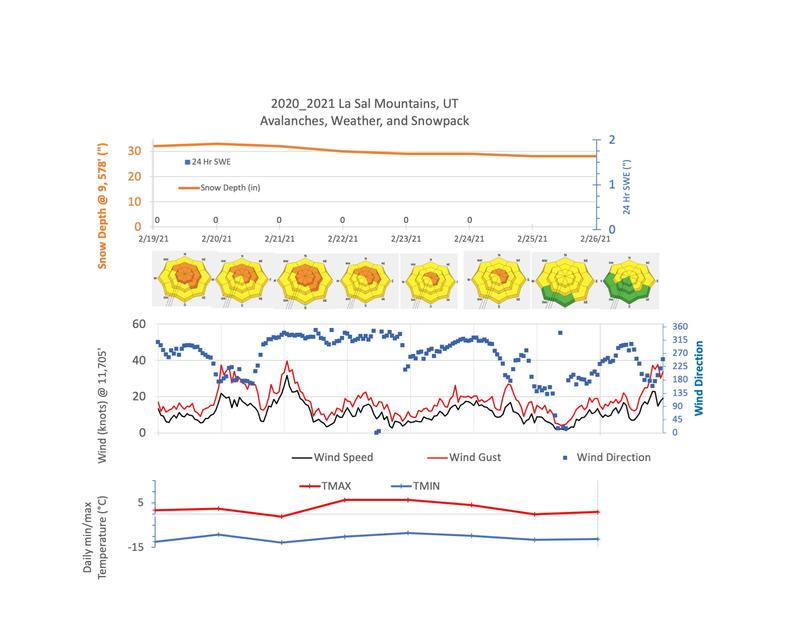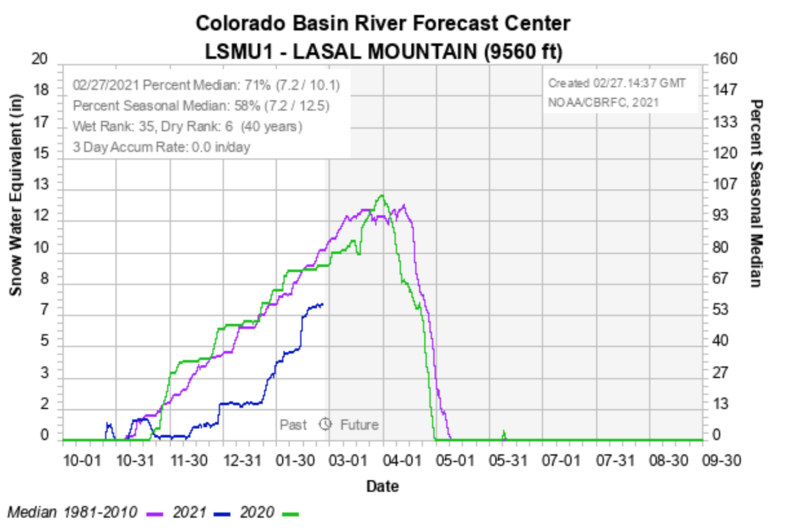Forecast for the Moab Area Mountains
Issued by Chris Benson on
Tuesday morning, March 2, 2021
Tuesday morning, March 2, 2021
The avalanche danger is MODERATE with recent deposits of wind drifted snow on all aspects above treeline. The primary concern, however, remains the very real possibility of triggering deep and dangerous avalanches failing on a buried persistent weak layer. You are most likely to trigger one of these avalanches on steep terrain near and above treeline that faces W through N, to SE. Avoid areas with thin snow such as rock outcroppings, sparse trees, or along slope margins as these are the most likely areas to trigger an avalanche. The danger is LOW below treeline, but you can still trigger small avalanches in isolated areas or in extreme terrain.
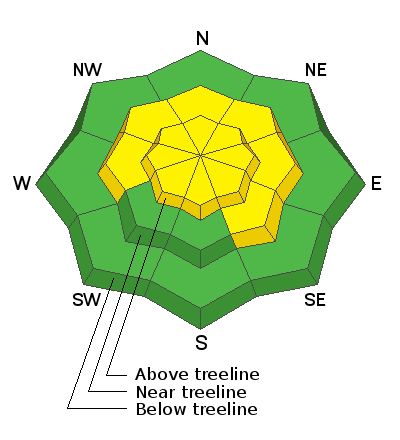
Low
Moderate
Considerable
High
Extreme
Learn how to read the forecast here


